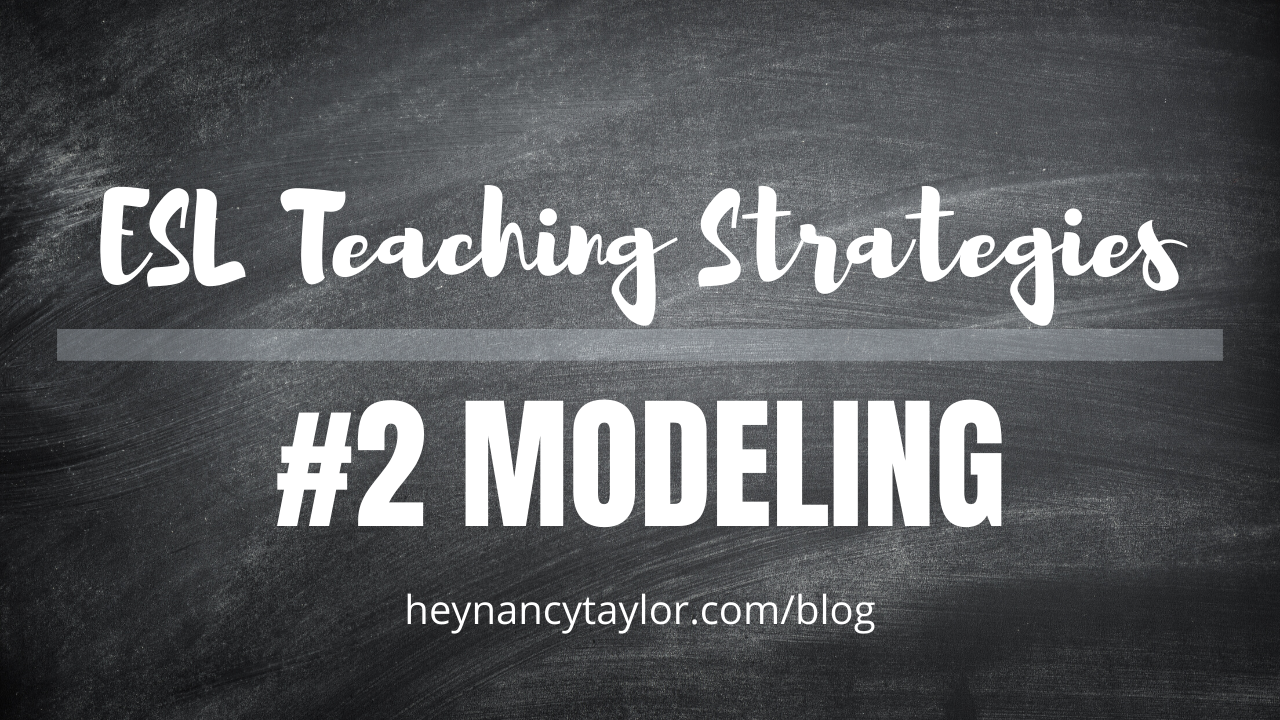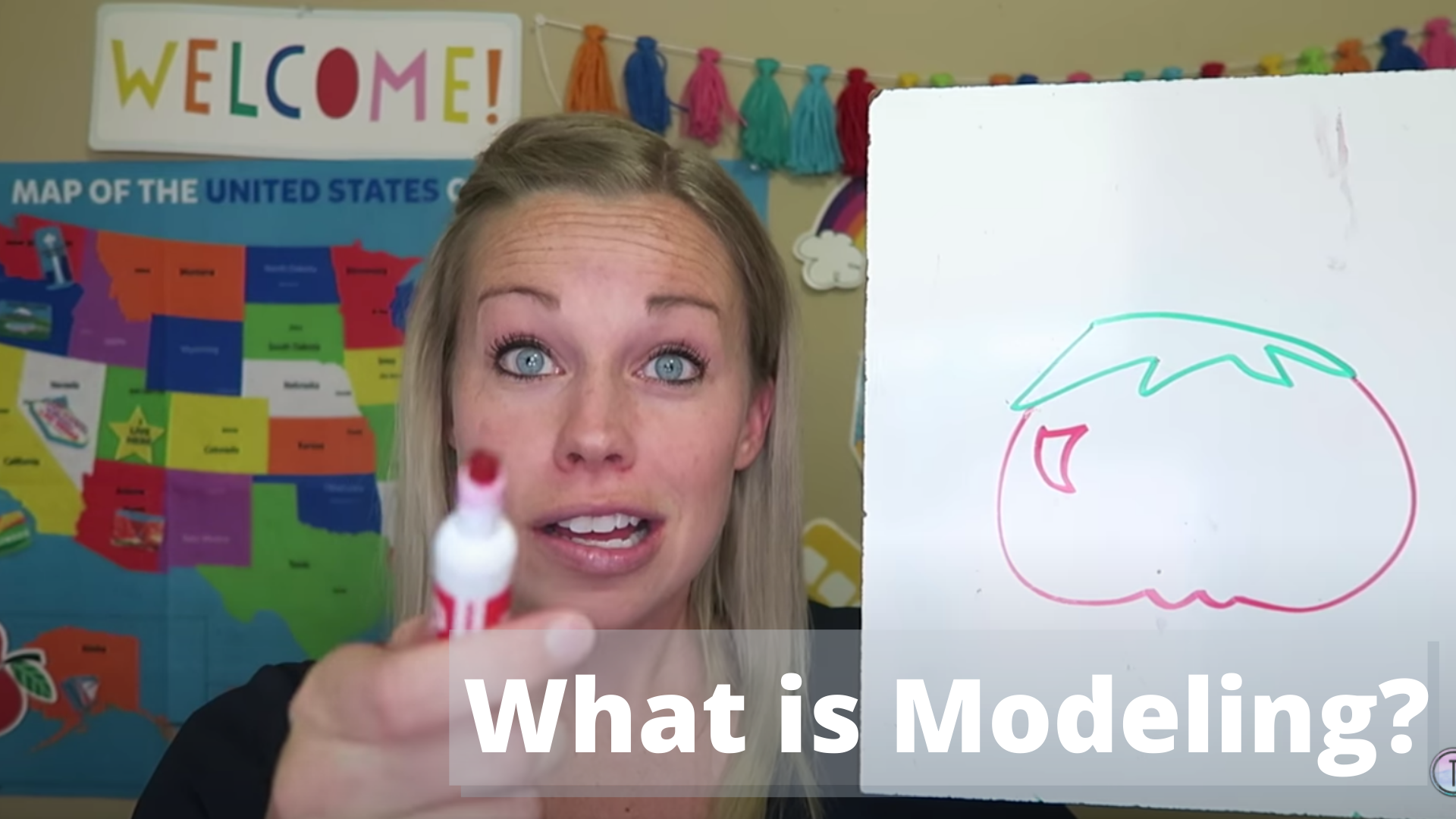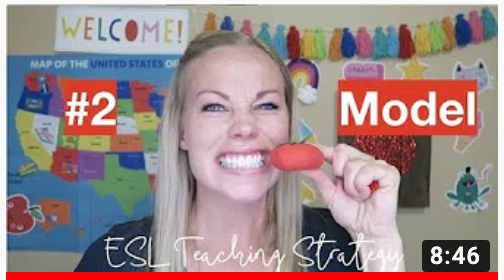ESL Teaching Strategies: #2 Modeling

Welcome back to another lesson in ESL teaching strategies. Today we are going to focus and learn more about "MODELING". If you missed #1 about TPR, you can check it out here.
Take a look at this video to see Nancy explaining this strategy and using it in the actual classroom. Modeling "modeling" if you will, so Meta!
What is Modeling?
No, you do not need to cue up "Vogue" by Madonna and get your catwalk shoes on. This teaching strategy is all about showing the students the expected behavior before you ask them to jump in and perform. Most often explained with the "I do, We do, You do" method, with a gradual release to independency.

Lower-Leveled Students will require you to do each of these steps. They will need almost everything modeled and they will mimic your actions and speech. That is why it is important to use good instructional TPR and props, careful pronunciation, and encourage full sentences.
With Higher-Leveled Students you can skip the "I do" and/or the "we do" portion of modeling. They might be able to jump right into activities on their own. Remember it is important to catch mistakes and use positive correction to model the actions and words to meet the lesson objective. Don't let them push you around! Haha - mostly kidding with that one.
Why do we use Modeling?

Modeling is something that every good teacher will use regardless of age, experience or content being taught because it shows the students what the objective is. Reaching the objective is the entire point of the lesson so you should give an example to students so that they understand what the standard is to meet. When it is done well, you will have better pacing with your lesson, your students will not be as frustrated and they will also leave learning the intended curriculum. Check out 2:12 in the video above to see Nancy model this with her own language. Suddenly, you will know what the word "blisskiss" means in Nancy-ese. HILARIOUS! But so accurate.
How do we Model?

This is takes some practice, but over time it will become second nature. Practice these techniques below to teach a student to draw a line to match items on the screen.
I do - setting the expectation
Show the students exactly what you want them to say and do.
The teacher says the word and sentence, then draws a line while saying "Draw a line". She can even draw a line in the air to add in a little TPR.
We do - practice session
The next section gets the students wet without completely dropping them off in the deep end.
Teacher says the word and sentence (student repeats). Then the teacher draws a line in the air saying "draw a line" and points to the student. The student attempts to draw a line with the teacher's help.
You do - show time
Now it's their time to shine. Let them show you what they know. This is helpful to gage understanding and what needs needs improvement. This is the part parents want to see at the end of the lesson. It is important to gradually build up to this step and then let them go.
Teacher says "draw a line". The student says the words and the sentence without prompts and draws a line to the correct item on the screen.

Ok folks there is your model for modeling. As you are preparing for your next classes, be sure to incorporate this strategy into your lessons. Look for ways to show the student with the method "I do, We do, You do". This is a great strategy to have in your teaching tool-belt. Be on the lookout for more strategies coming soon!
See you later, alligators!



